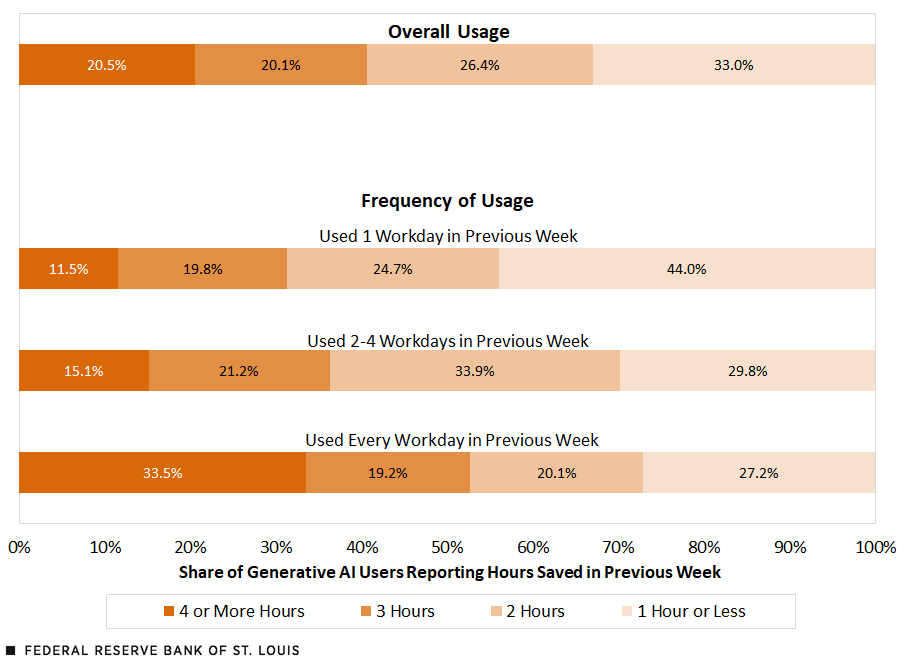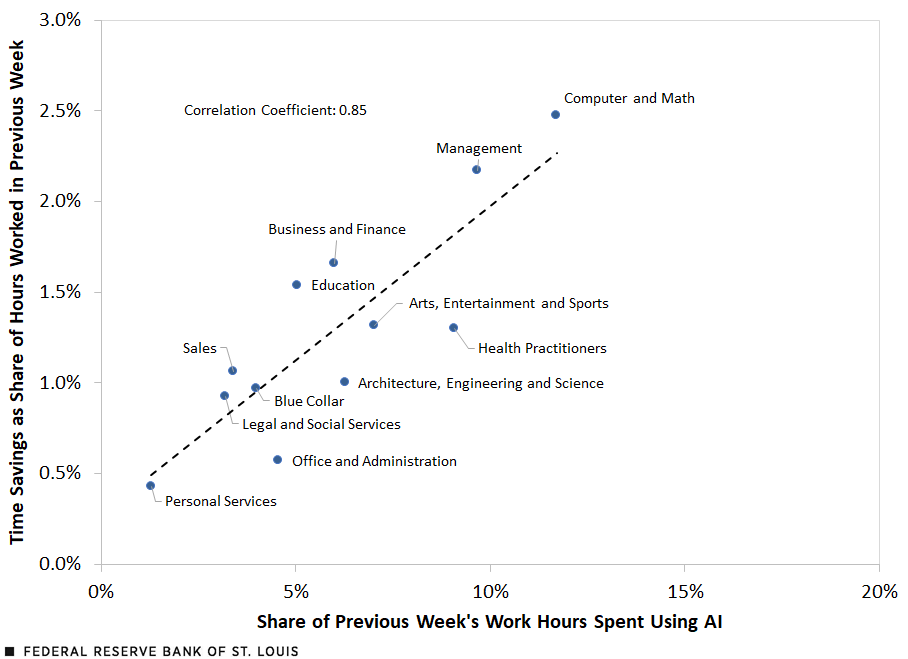The St Louis Fed recently did an interesting AI survey that suggested the benefits of AI are large in certain areas but far from uniform.
For each generative AI user, we computed the percentage of working hours saved as the ratio of time saved in the previous week to hours worked in that same week. We found an average time savings of 5.4% of work hours in the November 2024 survey. For an individual working 40 hours per week, saving 5.4% of work hours implies a time savings of 2.2 hours per week. When we factor in all workers, including nonusers, workers saved 1.4% of total hours because of generative AI.

The next figure illustrates how generative AI-driven time savings vary with usage across occupations. Time savings and overall usage are highly correlated. Workers in the computer and mathematics occupation used generative AI in nearly 12% of their work hours, and they reported this saved them 2.5% of work time. By contrast, workers in personal service occupations used this technology in only 1.3% of their work hours, and it saved them only 0.4% of work time. The slope of the dashed regression line is 0.17, indicating that a 10 percentage point increase in the share of time spent using generative AI is associated with a 1.7 percentage point increase in the time saved as a share of hours worked.


